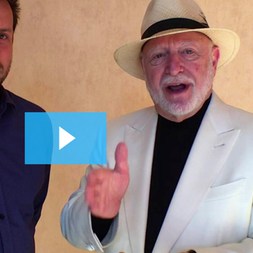“If your business depends on you, you don’t own a business — you have a job.”
― Michael E. Gerber, The E-Myth Revisited
Every entrepreneur knows to build a business that works without you – a business that scales – you need well documented systems and processes. Yet most business owners never find the time to document their core business functions -they’re too busy getting new clients and working with exisiting ones.
So what’s the secret to business systemisation and freeing yourself from the day-to-day operations?
Having worked with hundreds of clients helping them to document their business processes (here at systemHUB®) we’ve discovered two key things:
- Most business owners are the worst people within their organisation to document their processes – this responsibility needs to be delegated.
- Most systems and processes work just as well in one company, as they do in another. Eg. A process on how to hire good staff tends to work just as well in a retail store as it does in an online business.
With this second insight in mind, we recently went out on a mission to “create the system to extract, organise and optimise best practise systems/processes for business owners worldwide.” To start our journey, we decided to ask 50 expert business owners to share their best standard operating procedures (SOPs), checklists and processes.
Our plan is to highlight the very business practises that you can deploy within your business.
Here’s the question we asked:
“If you were going to start your business over again, what’s the one process, you’d put into place from day one?”

David Jenyns
Amazon bestseller, speaker, systemHUB™️ founder and business systemisation expert. David’s mission is to extract, organise and optimise best practise systems and processes for business owners worldwide.
Website: www.systemHUB.com
Twitter: @davidjenyns
The first and most important system any business owner can put in place is the system for creating systems. I know it sounds like a funny name but it’s serious business. Typically the business owner is the worst person within an organisation to be putting systems and processes into place. The sooner this is delegated to other capable team members, the sooner the business can begin to grow.
When I realised this, I realised all I needed was the master system to inform the creation of all future systems. Hence the “System For Creating Systems” was born. With this system, any team member can document, organize and optimize how they do things – this system completely takes you out of the loop!
Then, with each new system, you’re pushed further out of the daily grind as staff are able to complete tasks to a higher standard and with less support. If you’re interested to find out more, I’m happy to share this system with you – click here to download it.

Doug Kessler
Creative Director & Co-founder of Velocity, B2B marketing agency to the stars. I tweet on content marketing, B2B copywriting, social media, tech marketing…
Website: www.velocitypartners.com
Twitter: @dougkessler
This is going to sound really boring, but a good process for managing cash flow is absolutely essential.
If I were starting over, I’d make sure we got this right from day one.
So many businesses get into trouble with cash flow even when they’re growing and the revenue pipeline is healthy. But if everyone is paying late, you can run out of money fast.
When we were smaller, it was enough to just make sure we were pouring enough revenue into the top. That hid some bad habits. As we grew, we learned how important cash flow is to the health of the business and started to manage it actively. (Including getting in a CFO, Michelle, who transformed the business).
Managing cash flow combines a bunch of related processes – from agreeing fast payment terms with clients to building relationships with the accounts payable folks; invoicing on time and properly; and chasing up late payments early and often.
Agencies pride themselves on the creative stuff. The work everyone sees. But if the business isn’t on a solid footing, the best creative in the world is unsustainable.
If you get it right, the foundation of a good cash flow program gives you the freedom to do things like invest in the business; over-service projects that you want to slam dunk; and experiment with new things.
Not very ‘creative’ but essential!

Raphael Paulin-Daigle
You’re leaving money on the table… a lot. Growing revenues of E-commerce companies through our Revenue Optimization Methodology. CEO @ SplitBase.com
Website: splitbase.com
Twitter: @Rpaulindaigle
If I’d have to start my business over again, the first process I’d put in place would without a doubt be our client onboarding process.
As an agency, we quickly realized the first interactions with our clients sets the tone for the rest of the relationship. Our agency is performance-driven, and since conversion optimization is our #1 focus, we’ve had some companies think we could save their business almost overnight.
This means we first need to make sure we bring in the right clients, and then, setting the right expectations is extremely important.
We always set expectations during the sales calls to avoid surprises at onboarding, but when we start our work we need to be certain the client and their whole team is the same page:
- They need to know what’s their access to our team (e.g. can they call us anytime, 24/7?)
- What’s included, and what’s not included in our services? What’s extra?
- Best results come after 5-6 months of testing and continuous optimization, and since we don’t have a crystal ball – and this is marketing – nothing is guaranteed.
- A/B tests that lose aren’t bad. What really matters are the learnings and what we do with them.
The above, among many others, are some of the expectations that need to be set clear with the client from day #1, and this is all part of the onboarding process.
Then, internally we also have to make sure the project doesn’t get delays and that our team knows who’s accountable for what.
Here’s a rough overview of how our process goes:
- As soon as the prospect becomes a client, we send them a welcome email with what’s next and what to expect during our engagement. This email sets the tone, and even includes a personalized thank you video, and a link to schedule a kickoff call.
- Internally, we create all the project documents and folders needed, send the invoice, and finalize the project timeline and who’s going to be involved.
- Once the kickoff call is scheduled, we send them another email with all the systems and data we need access to in order to perform our work and achieve the desired outcomes.
- Within the first week, we have our kickoff call, determine key KPIs, success targets and timeline. We also schedule a fixed time every week for weekly check-in calls.
- We send them a company questionnaire to understand how they see their business, their strengths, challenges, and their customers.
- And finally, we send handwritten thank you cards and kickoff our gifting process.
The above is only a summary as the full process is many pages long and highly contextual to our business. The key here is that it’s always being updated and improved.
With this process, we can ensure every new project is organized and gets kicked off right, that our client relationships are off to a good start, and that we can keep bringing-in new clients without fear of overwhelm.
This is the groundworks of a project, and not having this could seriously hamper growth and scalability.

Jan Orsula
Enthusiastic Digital Marketer, Skilled in SocialMedia, Blogging, List Building. Ice Hockey Fan & Amateur GuitarPlayer.
Website: weekhack.com
Twitter: @jan_orsula
If I could go back in time, I would begin building my e-mail database from day one.
Even though you have no product to sell, no affiliate product or you didn’t choose the exact topic you’re going to cover.
But not just build an e-mail list, focus on building relationships with people on my list.
People tend to forget quickly. If you send them two or three e-mails within a month after they subscribed to your newsletter, there’s a big chance they totally forgot who you are.
And that’s the moment when your unsubscribe rate and complaint rate are rapidly growing.
Kinda frustrating, right?
Don’t worry; there’s a simple solution.
Sending daily emails after subscribing for a few (3-7 days in a row) can make a big difference.
Whether you’re teaching people how to find a beautiful girlfriend, how to cook a healthy dinner or just want to teach people programming, I’d use the same template.
Day 1 – Introduce the topic you’re teaching, tell them why you’re doing what you’re doing, why is it important, why they should choose the topic and take action.
At the end of this email ask what is theirs why. Starting communication is critical for email deliverability, and you’ll get valuable information as well.
Day 2 – Tell your story, how long you’ve been doing that and what are the results you achieved.
Day 3 – Talk about most common mistakes people are making and ask if some of those mistakes are familiar to your readers also.
Day 4 – Explain why now is the best time to start. No next week, not tomorrow, today!
You can learn a lot of detailed information by asking questions and talking to your list.
As you probably heard, people buy from people they trust and like. Getting into a conversation from day one is a great way how to do it.

Bittu Kumar
22, Entrepreneur & Author. I’m Product of 4 billion years of Evolution. Unemployable because I build my own dreams. Positive as a proton!
Website: www.bittukr.com
Twitter: @TheBittuKr
Employees are a valuable player in any organization. We initially were not able to hire productive employees, but over the time we have developed a reliable process to hire employees.
We look for these things in employees:
- An employee should be shameless, hustler and never seek for permission if he believes steps he is taking will lead the organization in forward direction.
- No casual attitude towards work and I’m sure if you work, results will be there.
- I also look how honest he/she has been with his previous company and what plans he have to take us to the next level.
- Energy during Interview and Crystal Clear Focus also matters. (You don’t want a super lethargic team in a growing company!)
We also use Employment Pre-assessment tests, we conduct interviews on Skype and use Angelist and lever to manage the applicants. Over the years it has saved us lot of time, and we have reduced our hiring effort time from six hours on an average candidate to 45 minutes.

Christina Salerno
Creator of Living Quirky. Entrepreneur. Creative. Multi-passionate. HSP. Puppy-lover. Gluten-free Italian. Deeply honest. Pathfinder.
Website: www.unknowableness.com
Twitter: @LivingQuirky
If I had to go back, to the very beginning, the process I’d put in place would be one of prioritizing experimentation over goals and rapid failure over fraught perfection. Whenever we start something new, even as seasoned entrepreneurs, we must make tons of assumptions. The key is to test those assumptions as quickly as possible. Over and over I’ve discovered that bringing curiosity and creativity in the form of experiments develops better ideas, reduces stress of setting the “right” goals, and fosters learning so growth can occur much more quickly.
From doing thousands of experiments, I’ve noticed 5 important elements:
1. Choose a simple container. 1 email? 1 evening? 1 week? By choosing designated parameters, the unknowingness doesn’t have to feel forever. But don’t get too stuck on these details. Just pick something simple and give it a try!
2. Start ASAP! Do the smallest step while you feel the initial jolt of inspiration. Leap before you’re ready. And after the container of time is complete, you are now free to choose something else! This creates ultra fast growth and massive learning because it gets you in action right away.
3. Make it a game! Remember when you were 4 yrs old and you received a new toy? Did you want to play until you read the full set of instructions? NO! You brought a sense of playfulness and a beginner’s mindset to exploring this new wonderfully foreign object! You can choose to approach experiments in this same way.
4. Fail fast and often. Seek out failure. Celebrate the mistakes. We’re conditioned to avoid doing something wrong. But, there’s so many valuable learnings in the uncharted territories. If you stay with what’s “right” and comfortable, you squash possibilities that have never been done before. Use failure as fuel for innovation.
5. Experiment like a tennis player vs. a swimmer. As a tennis player, once you hit the ball to the other side, it’s key to stay on your toes, ready to pivot and respond based on how the ball comes back. A swimmer on the other hand, stays in a linear lane and goes all out til they reach the finish line. A swimmers approach is great when you’re going full steam after a very clear, specific goal. However, with experiments, there are a lot of unknown factors. The ball could come back in a number of different ways, so you need to stay present an ready to dance!

Head of Growth and Optimization at Conversion Surge. He’s a Leadpages and Drip certified consultant and loves seeing the impact of his strategies and tactics on top-line revenue. Sign up for his free conversion marketing email course:
Website: www.conversionsurge.com
Twitter: @carlosagguilar
If I were to start my business over again, the one process I would put into place is an efficient method of qualifying potential clients.
Let me explain…
For me, not every website is a good fit for my services. One, they need to have an established business and website and two, they need to have the budget to afford my services.
When I was starting out, I had the opportunity to take on various projects for the sake of generating revenue. But as we know, with the prominence of cheap labor outside of the United States, it’s made it more difficult for consultants such as myself to justify what I charge — at least when starting out.
So what I would do to “pre-qualify” websites is conduct some due diligence.
I would do my best to find out how much traffic they were getting, whether or not they were running any paid ads, the number of social media followers and backlinks to their site.
If the numbers were high enough, I would then take the effort to find their email address and create a custom video of what we could change or test on their website with the goal of getting more subscribers/leads/sales.
The video would basically show them what they were going to get from me on day 1 if they hired me.
My close rate was high due to this pre-qualification but as you can imagine, it was a HUGE time suck. Not the best use of my time but I knew I could only take on 3-4 clients a month and I had a “bare ass minimum” I needed to make to survive (pay the bills).
In the end, it worked. Now the majority of my clients are referrals from the clients I landed early on using the process described above.
But as I said, there’s probably a better way to go about it than the way I did so that one does not spend a ton of time finding the “right” client.

Allan Pollett
Toronto SEO guru, internet marketing specialist & web business developer
Website: allanpollett.com
Twitter: @allanp73
One of the most important processes any business should have in place day 1 is billing. Even just setting up a Paypal account as a processor is an important first step.
Always set expectations in the client’s mind when they will be charged and make sure no work is done without some kind of deposit. Many businesses fail because they can’t manage the finances.
Money is the base which all businesses rely on, making it stable is the only way one can build their business. When people first start their businesses often billing is the last thing they think of. Often they focus on just getting the clients. The reality is there are many dishonest people out there and often they will not pay or they will try to nickle and dime you for every dollar.
Creating a billing regime nips this kind of behavior in the bud. If they don’t pay, don’t do work for them and move on to a real client that will pay.
Successful billing should be transparent in terms of services provided, scheduled so client know that on such and such a day they can expect to be billed, and simplified to make it as easy possible for clients to pay.

Deb Calvert
Improve sales effectiveness, build teamwork & develop leadership at every level. We can help! Author, Speaker, Exec Coach, Certified Master TLC, Sales Expert.
Website: www.peoplefirstps.com
Twitter: @PeopleFirstPS
When People First Productivity Solutions first started 11 years ago, our aim was to help other organizations become stronger by putting people first. I hadn’t fully figured out what it meant to put people first in the work we did for our customers.
Over time, we developed and modeled a people first approach more credibly and consistently. If we started all over again, from day one I’d use our unique process for customizing our training workshops. It includes:
- Surveying all training workshop participants before the workshop.
- Tailoring our presentation to respond directly to interests identified in the survey.
- Customizing our workbooks to include industry lingo and team challenges that are highly relevant.
- Using actual examples for role plays, case studies and key concepts.
- Manager-facilitated follow-up activities for sustained learning and development.
Now that we do this work, we know with even greater certainty that our clients are building organizational strength by putting people first.

Mike Arnesen
Founder/CEO at UpBuild, Geek, husband, conference speaker, startup culture advocate, and vegan hipster.
Twitter: @Mike_Arnesen
If I were to start my business again, the process I’d put into place from Day One would be a process for “how to be me”. Allow me to explain.
One of the more notable pain points in running my own digital agency was being the bottleneck for decisions that needed to be made. I’ll always be the one who makes the high-stakes decisions (like finances, hiring, firing, vison-setting) but I’ve learned in the first year that 75% to 90% of the decisions I was making were for questions or situations that I could have empowered others to decide and/or solve on their own.
I love that my team is comfortable asking me for help when they need it, but I now also see that I can empower them to make a lot of decisions on their own without waiting for me to reply to an email or put time on the calendar to have a chat.
What I can do instead (and this is still a work in progress) is document the process I use to make decisions. This includes everything from how far to go to make a client happy, how to make purchases without approval, how to find answers to hard technical marketing challenges, addressing interpersonal conflict, and more.
Starting this process has reduced my decision workload by at least half, empowered the team to feel more confident and capable, and really reduced the number of messages my inbox. So if I was starting by business from scratch, that’s definitely something I’d want to put in place from Day One.

Melanie Benson
Awaken Leadership | Impact Millions. Host of Amplify Your Success Podcast for visionary entrepreneurs. Love family, good wine, travel & spas
Website: melaniebenson.com
Twitter: @melcoach
I’m a big fan of creating documented procedures – it’s the only way to scale your business and ensure things are done the way you want.
One of the systems I found invaluable very early on was a way to decide if I would move forward on an opportunity.
As my own business grew very quickly, I was flooded with amazing opportunities. Some of them were great, many were not aligned with the direction I wanted to go. Being able to quickly decide wasn’t always easy, especially if the project had a lot of potential.
So I created a decision making filter for myself and then taught my team, and eventually created a process to help my clients develop a quick “green light” decision making process.
It includes an integration between the logical and the intuitive factors that every business owner must balance when making decisions. For instance, the “green light” filter might include basic information like:
- How long will this opportunity take to become profitable?
- Who is it for (as you can’t assume the opportunity is truly aligned with your ideal prospects)
- How much will it cost to move the idea forward?
- What is the time commitment from me/my team?
- What is the opportunity cost (aka what projects will get put on hold?)
Then you would want to evaluate more personal factors like:
- Do I share values with the people involved?
- How will this impact my joy and inspiration at each stage?
- Is this even aligned with MY goals and dreams?
- Do I really have time to devote to this – or will I sacrifice time and energy for what’s really my big priority?
That last question is a biggie – and one that many people don’t evaluate deeply enough. I’ve found that using this type of decision filter with my team helps me stay out of the “I don’t want to miss out” and stay connected to what’s really good for me, my team and the future of the business.
These types of decision filters can be modified to many of the decision points in a small business. From lead generation to speaking opportunities to the hiring process, when you have clarity on your decision criteria, a CEO or leader can accelerate good decision making.

Aimee Beck
Entrepreneur, Speaker, Coach & Artist. Founder & CEO of Beck SEO Copywriting. Writer for @TheSEMPost. Soon to be author. Leading Lady of aimeebeck.com
Website: beckseocopywriting.ca
Twitter: @aimee_beck
In a word, delegate. As an entrepreneur, especially when you’re first starting out, it can be difficult to share responsibilities with others. After all, how can you know who to trust? The problem with holding on to the reigns too tightly is that eventually you run out of steam. There aren’t enough hours in the day to be everything to everyone.
Ultimately, your goal is to grow your business. As your business grows, the demands grow as well. The last thing you want to do is find yourself in a position where your business has grown substantially, but you don’t have the manpower to produce for your newfound clients/customers.
That’s why it’s so important to carve out time to find (and hire) a team to support the business around you. It doesn’t mean you have to spend a ton of money putting dozens of people on salary. Start small.
Step 1: Figure out what you’re best at. Make a list of at least 3 things which you absolutely love to do, and that you completely rock.
Step 2: Figure out what you’re not good at. Make a list of 3 things that you hate to do, and that you suck at.
My lists look something like this:
Strengths: Speaking, promoting, copywriting, proposals, closing the deal.
Weaknesses: Accounting, project management, analytics
Step 3: The things that you hate doing are sucking most of your time and energy, leaving little energy to do what you do best. Get help. I needed left-brain help — an accountant, a PM and an SEO analyst.
Step 4: Find the right people. Talk to friends, colleagues, friends of friends and colleagues. Ask who they use to do their books. Find someone willing to work on a part-time, as needed basis. Fortunately, in today’s world, that’s easier, as most people in these realms work on an as-needed basis for a variety of their own clients.
Step 5: Spend the time up front to on-board your part-time team. It takes effort in the beginning, but it gives you the confidence to delegate, which frees you up in the long run to do what you love. To do what you’re best at doing.
Knowing what I know now, that’s the best advice I can offer to any entrepreneur, no matter what. Get help. Start small, do what’s affordable, but get help. Don’t be afraid to delegate. Don’t let fear stop you from loosening the reigns a little. You’re only as strong as the team around you. Ask for help and watch your business thrive!

Donna Merrill
Blogging and Internet Marketing Coach, #blogging Follow donnamerrilltribe.com
Website: donnamerrilltribe.com
Twitter: @donna_tribe
Content upgrades are a seamless method for building your list while, at the same time, offering additional value to your readers.
I would be sure to have some pdf offerings, ebooks, video and audio trainings… a handful of lead magnets that I could offer as content upgrades relevant to each of my main categories.
Here’s what it would look like on the front end of the business.
I write a blog post or an article that talks about why list building is an essential component of any online business.
While my blog guest is reading it, they get a text link, box or a banner within the article that says “Click Here To Learn My ‘7 Email Marketing Success Secrets’ (Free).”
Notice that “email marketing” will upgrade my discussion of list building.
I’m not steering people toward an unrelated topic, but something that can be stacked on top of what I just taught them about list building.
An alternative might be to write an article called “Top Email Marketing Success Secrets.”
I’d give 3 of my “secrets” in the article, then say “Click Here For The Rest Of My ‘7 Email Marketing Success Secrets’ (Free).”
How Content Upgrades Build A Dedicated Following
It starts here…
I’ve got somebody reading my article on a topic they’re highly interested in, and while they’re there, they get invited to learn more.
The link could go to a squeeze page, but even better, I’d have a “get it now” light-box that requires their email to get the upgrade.
When they enter their email, they’d immediately be redirected to my download page… no double-optin.
Of course, if you want a double-optin, then they get redirect to a thank you page that tells them they have to confirm their subscription to my list before they get the download link.
I like the single-optin so that they immediately get what they want, and in that way, I build additional trust as someone who delivers what she promises without making you jump through hoops.
That’s a process I’d initiate on day one of my new business, so I could start building a high quality following instead of just hoping that the reader will return to my blog another day.
It ends up here…
My “list” of followers would then get periodic email notifications of my new blog posts, products and other relevant offerings to keep my new business on their buzz-o-meter.

Gini Dietrich
CEO Arment Dietrich. Author @spinsucks, blog and book. Co-author Marketing in the Round. Speaker. Avid cyclist. A foodie. Loves shoes & wine.
Website: spinsucks.com
Twitter: @ginidietrich
If I were to start my business over again, I would put in strong financial controls. When I started, I learned a hard lesson that we are not the bank. We don’t even play a bank on TV.
I learned several years into business that not only was it OK to require payments upfront and 30 days net (maximum), but it was necessary. Too often, we go into business and agree to whatever payment terms our customers request. That is not how business is done, except at the enterprise level.
For a business just starting out, and even small- and mid-sized businesses, our jobs are to look out for our own financials. And that means requiring payment terms that allow you to continue to run your business. Remember: Cash is king is a phrase thrown around for a very real reason

Ted Rubin
‘Life is not about waiting for the storm to pass… it’s about learning to dance in the rain.’ 🙂
Website: tedrubin.com
Twitter: @TedRubin
Hire for passion, train for skills.
Then…
- Listen to them, and make sure you take actions that let them know you are listening. Every human being needs to feel that their contributions are appreciated and that their opinion matters. Otherwise work is a mindless drudge with no purpose (other than a paycheck), and the employee has no emotional connection to the work they do or the company that employs them.
- People want to feel they belong to a workplace community where they can develop friendships, encourage others and feel encouraged themselves. Companies that only seem to value “wins” and “quota crushers” and don’t encourage a culture of community lose out. Those that value team building and encourage risk taking, on the other hand, tend to keep quality employees longer.
- Internal mentoring is a must. Speaking of teams, it’s really no secret that mentoring (both being mentored and the act of mentoring another person), is a valuable practice for both new and established employees. It instills a sense of welcome for the new employee who’s a little nervous about fitting in, and helps all participants establish good relationships in a collaborative atmosphere.
- Make sure people’s opinions are valued. Are your employees afraid that if they voice an opinion they might get put down, harassed or even fired? This is another culture issue that is overlooked by those organizations that are out of touch with their staff.
- Senior leadership MUST lead by example. Your employees watch your leadership style and take cues from it. If they never hear a word from the C-suite outside the executive office, or if they feel there is a disparity between your stated values and what you actually do—watch out. It’s hard to “rally the troops” if they don’t feel connected to you or your ideals. Leaders who truly inspire their employees lead by example. They’re personable and accessible, and employees feel they can trust them.
- Empower employees socially. Do you require that employees shut down (or severely limit) their social presence? Are violations of this policy grounds for dismissal? If you’re afraid of what your employees might say about you in their private networks, then you’ve either hired the wrong employees or you’re in the wrong business. Every company should have a clear social media policy, but it shouldn’t include draconian measures to control conversation. More and more companies are finding value in empowering their employees to be advocates for them in their private networks.
- Be flexible when it comes to allowing personnel to work remotely. Current technologies make it relatively easy to set up remote networks, monitor hours, set up group meetings—everything you can do from the office. Most employees view being able to work remotely (even one day a week) as a great perk, and it can benefit your organization as well.
Chances are good that your competition is going out of their way to offer support, a flexible working environment, and a sense of family and common purpose. If you do the same, and become a leader in this respect, chances are good that your relationships with your best employees will flourish and you will attract many more. Your Brand/Business is what you do; your Reputation is what people, especially employees, Remember and Share.

Adam Toporek
Customer service expert, author, speaker. Transforms teams via high-energy customer service training & keynotes. #custexp #custserv #Podcast host #Angelinvestor
Website: customersthatstick.com
Twitter: @adamtoporek
If I were starting over again, I would focus on creating a defined training program from day one.
As a customer service trainer, I see how the gap between aspiration and execution often comes down to a lack of training. Whether it be sales, systems, or customer service, all too often training is something done informally at hire (if at all) and never revisited.
Professional sports players, the best in their field, constantly practice and train to improve their skills; why do we think that someone just starting out in a job or career doesn’t need the same?
There are many facets to effective training, but every business can start by establishing a formal program of regularly scheduled training and, most importantly, making sure it is a strategic priority that is sustained over time.

Alan See
Chief Marketing Officer ~ cmotemps.biz ~ AMA Content Marketer of the Year and a Forbes Top 50 Most Influential CMO on Social Media
Website: Alan See Linkedin
Twitter: @AlanSee
The process or mindsets I would suggest to individuals who want to start a business should actually be implemented well before day one.
Before starting a consulting firm or business that depends on your personal reputation you must make sure your personal brand is already known, carries influence and inspires trust.
That means building and nurturing your personal brand and network must be top-of-mind, even while you are working for someone else.
In order to thrive with that mindset you will need to think of yourself as a lifelong freelancer even though you may never launch your own company.
Lifelong freelancers also think of themselves as lifelong learners. Don’t stop learning and growing your personal brand, ever.

Michael Brenner
Sought-after keynote speaker, author, and CEO of @MKTGInsiders. Teaching leaders to focus on the work that matters to them, their teams, and the world.
Website: marketinginsidergroup.com
Twitter: @BrennerMichael
If I were starting my business over, I would define very clearly what kind of clients I will work with and more importantly which ones I won’t.
Since forming my agency, I have learned that Request for Proposals (RFPs) don’t convert. They are a huge waste of time, and they only commoditize the unique experience I bring to the services I deliver.
The process I follow now when I receive a lead (anyone interested in my services) is this:
- I immediately send them a detailed overview of my services with pricing, my approach, samples, testimonials, credentials and my background
- If they are interested, I ask them to setup a call with me. I use calendly to avoid back and forth discussions about calendar openings
- Once we have a call setup, I send them my standard terms and one-page simple proposal which includes 50% upfront payment due immediately upon signing. This allows me to avoid the net-60 payment terms issue. If they want to pay the final invoice in 60 days, I am ok with that but they must pay the 50% upfront before I start work. That way we both have some “skin in the game.
- If they object to any of those terms, I cancel the call and politely tell them that we may not be a great fit. I have also sent referrals to other agencies they can work with in the field.
I have found this process has dramatically increased the close rate of the prospects who are most interested in working with me. It eliminates wasted time with clients who are not committed to the process or who work for companies that want the work upfront with payment sent months later.

Ryan Biddulph
Seen at @virgin @forbes @foxnews @entrepreneur and @huffingtonpost. Wrote 126 eBooks. Retire to a life of island hopping at Blogging From Paradise.
Website: bloggingfromparadise.com
Twitter: @RyanBiddulph
Lead generation would be my #1 process to put into place on day one.
I would grow an email list right off of the bat. Versus waiting for many years, as I did.
I’d post a clear, easy to view opt in form on my blog sidebar and offer a delicious free giveaway to best help my readers.
I would also post consistent, clear calls to action with each of my blog posts to take a step toward either joining my email list or to get help through one of my products or services because premium-wise, all courses and eBooks and audio books lead to Rome. Or, Blogging From Paradise.
Whether on Amazon or Selz or Teachable or iTunes or Audible, I include links to direct customers and students back to my blog and website. This direction leads folks back to join my email list if they had not already done so.
I also would make sure to end all of my eBooks, audio books, paperbacks and online courses with a link to my blog to facilitate the list building process.
Most importantly though, before I would dive into lead generation I would intend to do things from an energy of love, not fear, and primarily for fun, not toiling and striving, when I built my home business from day one.
Everything is energy. Any process works brilliantly for entrepreneurs who do things predominantly from a place of love and fun versus from a place of fear and scarcity.

Madeline Puckette
Passionate about learning wine and all the wonderful places it takes us. winefolly.com/blog/ winefolly.com/subscribe/ (free!) winefolly.com/book/
Website: winefolly.com
Twitter: @WineFolly
A clearly defined value proposition with a plan.
I didn’t know that when I started, in fact, I don’t really think it was a “thing” back in 2011. Value Proposition design carefully assesses your customers pain points, their potential gains, and the product features that will provide solutions.
Today, I use value proposition design all the time like a habit.

Zac Johnson
Zac Johnson… the Entrepreneur, Internet Marketer, Blogger and Super Affiliate by Day, Super Hero at Night!
Website: zacjohnson.com
Twitter: @zacjohnson
Having been in the industry for 20 years now, I’ve had the opportunity to start many different sites and launch new ones all the time.
Something I wish I did better from day one, was collecting email addresses and having a well-thought out and planned autoresponder in place from the beginning.
Email is still the best way to grab information from your visitor and get them to keep coming back for more.
Autoresponders are even better — especially if you put in the time and effort to schedule one out that spans over the a two-year period, with new emails going out weekly. The lifetime ROI on a subscriber to such a list is quite valuable! Best of all, this very same practice can be applied to nearly any industry, niche or business model.

Robert O’Haver
I’m a 14 year veteran of SEO & Digital Marketing. Host of @SearchTalkLive, Speaker, Drone Racer, Consultant & online marketing geek!
Website: searchtalklive.com
Twitter: @RobertOHaver
This one is easy I have learned a lot from the trials and errors I have made over the years. One thing that has helped my business to flourish is communication with clients from day one.
What I mean by this is educating the client up front show them competitive analysis in their space, setting expectations and delivering on them month-to-month.
Providing clients with a road map and strategy custom tailored to their overall marketing plan and business. Then show them how you are going to execute the strategy to obtain their overall goals. It is important to also detail the work completed on what has been done each month, as well as reporting on the progress that has been made.
Transparency is key to success and gaining long term clients.
The way I hire is I have a very strict set of guidelines. They must have at least 3 to 5 years of experience in their prospective expertise.
And then that potential candidate must pass a set of tests to gauge their skill set and methodology utilizing best practices before being considered for a position. Lead generation is mostly word of mouth.
We do have a sales team that reach out to local businesses that spend a lot of time networking with people and business at events.
We also evaluate companies online presence. Due to the processes put in place in the first question we rarely have problems getting our clients to pay their invoices on time.
We do have in our contracts stating that if a client is late paying that there are additional fees accrued and that helps.
Our secret sauce is following best practices.
- Never outsourcing our work to insure the quality of work and following a strict methodology and work ethics.
- Keeping communication and reporting a high priority for all clients. A happy client is a long term client.
- Always under promise and over deliver. This makes you look good in the eyes of your clients.
- Spend time educating your clients in the beginning to set expectations and dispel any misconceptions going in.
- Be detailed in documenting the work you do for each client and provide detailed client reports to provide monthly.

Steve Tunstall
CEO & Co-Founder Inzsure.com Speaker & Author www.amazon.co.uk/dp/B01MU3GSGS sg.linkedin.com/in/stevetunstall… tunstallasc.com
Website: inzsure.com
Twitter: @TunstallAsc
The best things to out in place from day one are the latest tech admin tools. Hubspot for CRM, Xero for accounts, Google for admin etc etc. don’t try and wing it with an old school approach. Go tech from day 1 and never look back.

Darren Kavinoky
No blah blah! Host #DeadlySins on @DiscoveryID | Keynote Speaker | TV Legal Analyst @TheInsider | Founder @1800NoCuffs
Twitter: @DarrenKavinoky
I would plan and execute around what I consider the five pillars of any business, regardless of product or service: Marketing, Sales, Product or Service Delivery, Operations, and Accounting. Businesses often fail because the owner is good at one of these things, not all five

Josh Steimle
Agency CEO, @TEDx speaker, author Chief Marketing Officers at Work, 200+ articles on Mashable, TechCrunch, Forbes, Time. I help people become influencers
Website: joshsteimle.com
Twitter: @joshsteimle
I would maintain a buffer of six months of operating expenses at all times. That means if I were starting out and it was just me, and I paid myself $5,000 per month and had $5,000 in other expenses, I would keep $60,000 in the bank and only use that in the case of a real emergency, a “real emergency” being an event that would cause me to go out of business if I didn’t dip into the $60,000.
If my expenses went up to $20,000 per month because I hired on more staff or started spending more on marketing or something, I would adjust that buffer to $120,000. Of course this is easier said than done, but it’s worth doing, even if it’s hard.

Kurt Elster
The Tyler Perry of Ecommerce. Founder @Ethercycle, host @ShopifyPodcast, author Ecommerce-Bootcamp.com & EcommerceHacksWeekly.com – Let’s make money.
Website: kurtelster.com
Twitter: @kurtinc
If I were going to start my business over again, the one process I’d put into place from day one is my client onboarding process.
While providing a great customer service experience for clients, it also saves me time, but most importantly, it sets up boundaries upfront. We clearly establish what appropriate feedback looks like, and what availability should be expected. Here’s an example: https://ethercycle.com/onboarding/store-info/

Mike Allton
Content Marketing Practitioner ⌨ | CMO | Author ? | ? Award Winning Social Media Blogger | Fluent in Star Wars & ?
Website: thesocialmediahat.com
Twitter: @mike_allton
My very first steps would have been to map out a complete set of pages, processes and emails that took first-time readers through a specific funnel and desired final action. At SiteSell (www.sitesell.com), we refer to this as your Site Blueprint.
Understanding how to organize your website really means understanding how to organize your business, and to do so in a way that actually benefits and makes sense to your visitors. Too often, new bloggers (myself included), just start blogging without any real idea where it’s all going.
This invariably results in months, sometimes years, of wasted time and energy, and an unfulfilled business mission.

Keri Jaehnig
Founder, @ideagirlmedia in Ohio ~ 2016 Top CMOs Followed On Twitter, award winning social media marketer & leader of Likeable League Insider’s Club.
Website: ideagirlmedia.com
Twitter: @kerijaehnig
I read the the book, “E-Myth Revisited,” by Michael Gerber, and it was the best thing I ever did as an entrepreneur! Confession: I read it AFTER I started my business, so I could really relate with the business owner in the book…
If I were to start my business over, or start a new business – As I may – I would designate expenditures DAY 1 for marketing and also online business related and workflow management tools that would allow me to delegate. In turn, I would then have more time to work ON my business rather than IN my business at a time when it is absolutely essential. Let me explain…
How I did it the first time:
* I did my own social media marketing – every part of it (research, content creation, curation, posting, social response, email marketing, etc.).
* I did my own bookkeeping.
* I did all client work.
* Instead of investing in paid online tools early on, I went with free versions, or no tool at all, which took a lot of time.
* Blogging
Anyone that knows social media and online marketing knows that the list above is time consuming. It left me very little time in front of people connecting, building partnerships and conveying my passion for what I was doing. I got very tired! And even lost enthusiasm.
After awhile, I invested in tools, and it became quickly evident that the price of the tool was worth it, as my time for working ON my business was much more valuable! Same with allotting expenditures for bookkeeping, and assistance with some social media management tasks.
Also, I waited to blog. I had it in my mind that when all of my other online properties were set, as well as my business system, then I would blog. However, for my niche, I found it to be a BIG mistake. When I finally did start blogging, I discovered it was the gasoline that fueled the car! And now, when my blog stops, everything else does too.
Subscribes to my email list, visits to my website, inquiries from potential clients, and contact from potential collaborators. Really, for any business, this is the case – It’s what gets us found online! So, even though it sounds like a big task, it is the meat to any online marketing strategy. (And, can also be hired out for those not confident with their writing).
Said another way, I would NOT wear all the hats and would – from the very start – embrace help and investment in the right tools.

Toku McCree
I coach brilliant misfits, super successful creatives, and those who long to move beyond the first few layers of success.
Website: unexecutive.com
Twitter: @unexecutive
The process I’d put into place early on is having powerful conversations with my clients.
When I first started my career as a coach I was so focused on my brand and my website and explaining to people about why I could help them.
Luckily a few clients early on saw past my unclear marketing and invested in me as a coach because of the kinds of conversations I had with my clients.
It’s so easy to obsess about what we write or share on social media, when what makes the biggest difference is how we show up with the very first people who pay us to do what we do.
As soon as I started spending more time really getting to know and serve my clients I went from making $20k a year to over $100k. I went from chasing after clients to having clients wait in line to work with me.
No matter what your business is make sure that spending really meaningful times with your clients is a big part of your process.
Take time to talk to your raving fans and understand them really well. Research potential clients and partners like you were a investigative journalist so you can understand what they care about and what makes them tick.
Nothing else I’ve invested time or money in my business has made a bigger impact than this.

Gregory Elfrink
Content marketer for @empireflippers empireflippers.com Creating content about buying and selling online businesses. Avid traveller and lover of books.
Website: empireflippers.com
Twitter: @gregelfrink
This is a tough question for me to answer, but if I was there at the very start of EF I would probably recommend us to double down on content marketing.
The reason why is that our entire business is currently built on that style of marketing – but we never really had consistent output with it. I would create an editorial and try to publish new insightful content at least twice a month.
Creating great content is an awesome ROI, and it is cheap to start out with. However, if we had some money, I would also recommend going to conferences since you can build trust so much faster in person.
This is how many smaller brokers get big deals, whereas we rely still mainly on our marketing systems to build the trust needed that appeals to six figure and even seven figure entrepreneurs.
The great thing about conferences is that they can double as content in so many different ways – from video interviews, write ups about the events, podcast recaps etc. – while also being “on the ground” to meet potential sellers with big businesses.

Mark Goulston
Runs mentor program for entrepreneurs who want to be become more influential leaders in life & syndicated columnist at Biz Journals at: http://bit.ly/2czszU8
Website: markgoulston.com
Twitter: @MarkGoulston
Make sure you focus not on what people need to have or even want to have. Instead focus on what people “gotta have.”
When you can identify what customers and clients gotta have, you don’t have to persuade them, you just take sales orders. That has been the secret of Apple products like the iMac, iPod, iPhone and iPad. They were things that people “gotta have” and lined up around an Apple Store as soon as they became available.
And the secret to creating “Gotta Have It!” is make sure that your product/service causes your customers/clients to think: “Whoa!” “Wow!” “Hmmm…” “Yes!” Because if you don’t cause that, they’re going to think, “Nah, no thanks, never mind, pass.

Brynne Tillman
Transforming the Way Sales Professionals Leverage LinkedIn and Social Selling to Grow Their Business. Questions? Let’s Chat.
Website: peoplelinx.com
Twitter: @BrynneTillman
If I were to start a business today I would establish a channel partnership/referral program early on. Working with other entrepreneurs who offer complimentary services and selling into the same buyer is a powerful way to grow business quickly with very little overhead.

John Kvasnic
I work with amazing teams to make great products that people love. Founder @getopenhouse, fypio & @navantisinc.
Website: theopenhouse.com
Twitter: @kvasnic
I think great businesses are made up of great people. To me the people we work with are the most important thing.
I would focus my energy on processes that help us identify great people who have amazing talent, are great teammates and fit our culture.

Pamela Wilson
Author, Master Content Marketing. Speaker, designer, coach, and founder of bigbrandsystem.com .
Website: bigbrandsystem.com
Twitter: @pamelaiwilson
The one process that has had the biggest impact on my success has been to write for larger websites that serve a similar audience to the one I want to serve.
Building these “offsite” relationships with readers and directing them back to an offer on my site has helped me steadily build the traffic and email list numbers for Big Brand System.
And because I work extra hard to make my guest posts super valuable, writing for higher-traffic sites has made me a better content creator, too.

Alina Wheeler
Author, Designing Brand Identity, 4th edition. Process coach and strategic imagination advocate.
Website: alinawheeler.com
Twitter: @alinawheeler
If I were to start a new business today, I would focus on answering the following questions:
1. What is my purpose beyond making money?
2. Why is this business (product or service) needed?
3. Who are my ideal customers?
4. Who are my competitors?
5. What can we deliver or promise that no one else does?
And then, I would begin the branding process.

Aaron Agius
Intelligent, imaginative inbound marketing ideas that make some serious noise. SEO, Content, Social and more.
Website: louder.online
Twitter: @IamLouderOnline
I’m not sure if this counts as a process, but if I had to start my business over again, the one thing I’d do differently would be to start building my personal brand from day one.
I’ve been fortunate to work with some incredible colleagues in this space over the years, and the one thing I’ve seen that makes the biggest difference between those who succeed and get recognized and those whose careers never take off is a strong personal brand.
It makes sense, if you think about it. When people recognize you as an expert in your field, the best projects come to you. You don’t have to do the hustling that so many in service/client-oriented businesses have to do. You get to pick and choose, and that’s a much stronger position to be in.
So what I’d do, if I was starting from scratch, would be to build time into my daily schedule for the following kinds of tasks:
- Writing blog posts for my company site and contributing guest posts to others.
- Answering questions on services like Quora, Inbound.org and Growth Hackers.
- Actively seeking out speaking gigs at industry events.
- Attending local networking events, as well as larger conferences.
I’d measure the impact of each tactic, adjust my process as needed and incorporate other strategies over time that I thought would have the biggest impact on my personal brand.

Warren Whitlock
Influencer in health, business, tech, blockchain, solar, social media marketing. Futurist, Advisor, Author and friend
Website: warrenwhitlock.com
Twitter: @WarrenWhitlock
I’ve started many businesses and helped 100’s of others as an advisor. Every year, I find myself going back to basics more, insisting on clarity in what often gets overlooked.
Before I consider a new client, I now insist on hearing the founder’s goals. Once in a while, there’s a great vision. Even then, we touch on what was missing. The more clarity we can get in what an entrepreneur wants to have happen, the more likely they will get it.
HINT: “Make a lot of money” is assumed. That’s not enough for success.

Chad Pollitt
Faculty Indy @KelleySchool, Adjunct @RutgersU, Top 20 CMO Influencer, @HuffingtonPost & @Guardian contributor, VP at @NativeInstitute & former @USArmy Commander
Website: chadpollitt.com
Twitter: @ChadPollitt
I would start by investing much more in the middle of my funnel with inside sales. Many brands today are trying to sure up the top of their funnel through content marketing. That was never a problem for me. However, no matter the robustness of the top of the funnel, if inside sales doesn’t do its job none of those conversions will turn into opportunities.

In addition to an overall strategic plan, a system or plan for getting customers. No matter how good your product or service is, without customers, you don’t have a business. (By the way, I did this when I first started. I couldn’t imagine starting a business without a formal sales plan.)

Kristin Zhivago
President of Cloud Potential. #speaker; #blogger; Expert on: customer’s buying process #digitalmarketing. Contact me to speak: [email protected]
Website: cloudpotential.com
Twitter: @KristinZhivago
I’d say that we would start out solidifying our principles sooner. We have done that over time, and my business partner would say that he already had those principles in his head the day we co-founded our company. But as I have worked with him every day and have applied these principles to my working life, I have come to realize the amazing power of sound principles.
Everyone is so busy chasing the latest “tactic,” that we tend to forget that tactics are worthless without principles. I like to think of it as “tactics may win battles, but principles win the war.”
Principles matter. They guide decisions. Even more importantly, if your principles are sound and based on reality, they ensure that your decisions will be good ones.
Examples? Well, our first principle is just that: “Wars are won with principles, not tactics.” Our second one is that “Everything starts with the customer.” Today’s customer owns the buying process, start to finish. If you think you own the selling process, you’re toast.
Our third principle (we are up to 11 by now) is that the Internet has become a global conversion platform, where all this customer buying activity is already taking place. You either get in sync with that activity or you will be forever related to the backwaters.
Another principle: Move fast, take less risk, and get things done. Moving slowly is now the riskiest thing you can do.
These principles guide every thought we have, every decision we make, and every action we take, as we grow our business and help our clients grow their businesses.
Reality-based principles are grounding, liberating, and powerful.

Ian Cleary
Founder of RazorSocial, marketing tech guy, writer Forbes, Entrepreneur… Kick boxer!
Website: razorsocial.com
Twitter: @IanCleary
The most important process is for your financial analysis. This means that every week you produce a report showing your incoming money, outgoing money and final balance. With a very strong focus on your financials your business will be a lot healthier.
When you set financial targets and monitor your progress on a weekly basis you are much more likely to achieve them.

Tom Corson-Knowles
Bestselling author of Secrets of the Six-Figure Author, publisher, marketer, book lover, founder of The Publishing Profits Podcast show. I love my life
Website: www.tckpublishing.com
Twitter: @JuiceTom
Written Operating Procedures
For me, starting a new business is a massive game of trial and error. The key to success is trying out a lot of different things and seeing what works for your market and audience.
If I had to start a new business all over again, the first thing I would do is write down everything that works and the step-by-step operating procedures for completing those tasks.
That way, you can delegate all the tasks you know are going to help grow the business while you continue experimenting to find even more things you can do to grow the business and get new customers in the front door.
I recommend using Google Docs to create your SOPs (Standard Operating Procedures) and delegate everything you’re not uniquely qualified to do so you can keep focusing on growing the business instead of getting bogged down in administrative and repetitive work.

Karen Tiber Leland
Branding & Marketing Strategy & Implementation for Business, Team & Personal. Best Selling Author, TEDx Speaker, Journalist. 4 Fun: Foodie, Artist & Actor.
Website: sterlingmarketinggroup.com
Twitter: @KarenFLeland
If I were to start my business all over again the one process I would put in place hand’s down, no questions asked, would be a proper book keeping system, run by a professional book keeping firm (more about this later).
As an entrepreneur and small business owner the amount of time and effort I wasted trying to do this myself, was… well insane. I had far better uses for me time, that would have earned me more money.
I would have immediately hired (as I have now) a book keeping firm to handle all the following and more:
- Invoices. Issuing and following up
- Bill paying. All bills, personal and business
- Reconciliation of accounts
- Monthly reporting on P&L, and budget
- Paying withholding taxes automatically
- Taking an automatic withdrawal for savings every month
- Paying salary and taking care of payroll taxes
Most, if not all the above have tax and/or legal implications and are best handled by someone who actually understands them in depth.
The one catch? I would put a process of professional book keeping in place with, a professional book keeper or book keeping firm.
I made the mistake of hiring (as many entrepreneurs do) people that were not fully qualified, part timers, sort of book keepers, and just in general not wholly competent.
Today, I have a professional book keeping firm that handles all the above. I save at least 20-30 hours a month, and more than that, I have peace of mine. Oh how I wish I had done this from day one!

Ebong Eka
TOP Small Biz Expert! Author, @TEDx Speaker, Pricing & Sales Prospecting Leadership Expert, TV Contributor | CPA | EKAnomics.com | StartMeUpBook.com
Website: ebongeka.com
Twitter: @ebongeka
On day one – I’d put in a sales funnel or process, sales script, sales message and how to collect payment from new customers.
So many struggle with that and waste time on logos and websites…but not prospecting and sales!

Nir Eyal
I work on, write, and teach about products that move people. Author of Hooked: How to Build Habit-Forming Products NirAndFar.com/GetHooked
Website: nirandfar.com
Twitter: @nireyal
I would make sure I’m starting the company for the right reasons. Don’t do it to make a lot of money. Do it because it must be done. Build something you want to exist in the world and that you could say you were proud to have worked on even if it was a financial failure. If you do that, you can’t lose.

Kerry O’Shea Gorgone
Speaker, Lawyer, Writer, Podcaster. Dir. at @MarketingProfs. Write for Social Media Explorer, @HuffingtonPost, @SpinSucks, @MarkWSchaefer, @MackCollier & more.
Website: KerryGorgone.com
Twitter: @KerryGorgone
I’d set up my value proposition on Day 1 and communicate it (or revise it) on an ongoing basis as I expanded my team.
Before you start a business, it’s critical to define your value proposition: what do you offer and what kinds of people need it? “Everyone” isn’t an acceptable target audience. Start with a simple fill-in-the-blank:
For ________________, we provide ______________, that will appeal to _________________.
Example: For parents of disabled children [TARGET AUDIENCE], we provide a safe and welcoming environment for watching newly released movies [UNIQUE], that will appeal to parents whose children love to move and make some noise while at the theater. [why it’s unique].

Darrell Evans
Entrepreneur. Co-founder, YokelLocal.com. Simplifying digital marketing strategy for startups to $100 mil. Powered by inspiration. DMs are welcome.
Website: yokellocal.com
Twitter: @Darrell_Evans
The purpose of a business is to “generate customers.” So the #1 thing I’d do if I restarted my business is to clearly understand my customer.
When we started, we didn’t quite understand who our customer was and how they will journey through the buying process. We must clearly understand our customer’s pain and then put together a marketing, advertising and communications strategy that aligns with that journey.
This advice is now the #1 piece of business advice we give our clients who are typically chasing too many marketing tactics (i.e. Facebook ads, blogging, SEO, SEM) etc without knowing what’s happening in the mind of their customer.
We call this understanding the psychographics of your buyer. It’s not the sexy stuff so people ignore it. Which is why we recommend businesses to start here and develop content that specifically speaks to every aspect of they buying journey.

Travel writer. Digital strategist to Life & Health Coaches. Lonely Planet #lppathfinders #travelblogger at http://epicwanderings.com #bloggingboost founder
Twitter: @ek_bradley
If I was to start over again, I would have ‘gone pro’ from day one. I would do extensive research about my niche and target market, and create a brand that would be appealing to them and that also best reflect my personality and work. I would have also gotten professional photos sooner, and written long, in depth posts.
And because multi media is so important is showing one’s personality and expertise, I’d have started doing videos and audios sooner. I still need to incorporate this into my daily work routine!
Because being organized is so important for success, I would have also set specific hours for me to do certain tasks, ie between 1 and 4 I write for my blog or other content creation tasks. Perhaps I should have recruited my husband to be on board to help me stay on schedule, and to prevent me from being sidetracked.
The good news is that no matter if one is new to business or has been around for a while, you can always course-correct and get focused on what you need to do to attract your ideal client.

Pamela Slim
Author, Speaker, Passionate Connector. Founder of K’é a Small Business Community Space in downtown Mesa. Latest book: Body of Work.
Website: pamelaslim.com
Twitter: @pamslim
If I were to start my business over again, I would put in a process in place to make sure that I invited people to my mailing list after every single interaction.
This means on blog posts, after talks, on webinars, and after being interviewed for podcasts. Growing your email list is one of the healthiest things you can do for your business.

Mike Kawula
CEO @theSocialQuant Social Media Twitter Marketing Startup driving businesses Leads & Sales! Entrepreneur, Author & Inc. 500 Alum bit.ly/mkawula
Website: socialquant.net
Twitter: @MikeKawula
Pull Up Your Big Boy (Girl) Pants
You’ve taken the leap and entered the big leagues. You’re no longer a wantrepreneur – you’re a full-fledged entrepreneur.
Congrats, it’s time to get real serious.
Let me share with you two pieces of advice as you head off to start your business.
The first is a heart-to-heart on three important nuggets of entrepreneurial wisdom. The second is a mandatory strategy you should start today (I’d actually do this pre-launch).
My Three Heart-to-Heart Nuggets:
Imperfect Action Beats Perfect Inaction
One of the most common thing I see newbie entrepreneurs do is worry about making everything perfect before actually getting market feedback.
Always remember that perfectionism is the arch-enemy of success!
Your website, logo, copy, etc. will always be changing. Get your product or service out to the market fast and get feedback.
Slaughter the Naysayers
That’s right, take all the negative people in your life behind the barn and put them to rest (figuratively).
These are the, “If I can’t have success, neither can you” people (crabs in the bucket mentality).
Your friends, your family, people in groups, sometimes even your mentors, will fill your head with junk on their opinions.
Pay no mind to them. Concentrate on launching your business and getting feedback from people who will actually pay you.
When the naysayers visit you in a few years at your mansion and see your Ferrari parked in the driveway, then see what their opinion is.
You’re an Entrepreneur (not a Foolpreneur)
Entrepreneurs work on their business, not in their business.
Here are two mandatory readings for you (remember Learners Are Earners).
First, The E-Myth by Michael Gerber – he’ll teach you a system you should set up from day one in your business and continue till the day you sell it for billions.
Next, Google The Eisenhower Matrix and study it for 20 minutes, then print it out and hang on your wall.
Make sure as an entrepreneur you’re spending all your time only doing what’s in the top two quadrants (important/urgent and important/not urgent). Eliminate and delegate the bottom to quadrants.
Foolpreneurs are entrepreneurs who are fooling themselves that they’re “grinding & hustling” but really are spending time in the bottom quadrants. They’re working in their business, not on their business, and not moving forward.
You’re an entrepreneur now. Act like one!
Mandatory Strategy from Day One or Pre-Launch
The money is in your email list!
You’ll hear this over and over from successful entrepreneurs, yet entrepreneurs delay building a list for some odd reason. Don’t! It’s easy to build a list!
Here’s the quick and dirty formula:
- You know your niche (I hope). Pay a copywriter $150 to create a great piece of content that answers your niche’s biggest pain point.
- Pay that copywriter $100 to create copy for your landing page and social media posts (good copy is king and without it you’re dead).
- Pay a web designer $200 to create a landing page with an email opt-in to download this content. Have them also create all your graphics to share on Social Media (good design is queen and without it you’re dead).
- Go to Twitter advanced search, Instagram search and LinkedIn search to find your target niche and message them your offer.
- Build a 10,000+ email list in your first 90 days.
No Excuses, Just GSD (Get Stuff Done)!

Lilach Bullock
Speaker | Social Media Consultant & Trainer | Content Creation & Amplification | Influencer Outreach | Website Conversion | Traffic Generation | Proud Mum
Website: lilachbullock.com
Twitter: @lilachbullock
I think that the one most important thing I would focus on, would be establishing the lead generation process, as well as gathering emails as soon as possible:
– Website optimisation: the first step would be to design my website for conversions; then, as the website went live, I would try to continually optimise it to see what brings in the best results
– Setting up the lead capture process: I would establish exactly how I will be capturing leads, from my blog and website, to social media and anywhere else in between.
– Lead nurturing: it’s also important to establish what the lead nurturing process would be like. You can’t just capture leads and then hope for the best – you have to give them the content.

Mana Ionescu
Preso at #Chicago agency @LightspanD. Entrepreneur, Speaker &friend. Busting #digitalmarketing myths. ‘Make no little plans.’ Be bold, brave, kind. #SCUBA
Website: lightspandigital.com
Twitter: @manamica
I would put in place the most meticulous contact/lead welcome communication campaign. The first thing you need is a good CRM. But a system in itself won’t nurture your leads. You also have to have a strategy for how to collect and use data. A lot of startups get the CRM in place but forget to collect the data. Or collect the data but don’t do anything with it. It’s best to develop a full communications plan that includes both technology and marketing. So, pick a great CRM.
Then focus on collecting data at every opportunity and all touch-points. By “every,” I truly mean every opportunity. Every time you talk to someone in a business setting, ask them if they’d like to get [enter value proposition] great tips from you. Add them to the database. Add exist intent pop-ups to your website. Add chatbots. Build your website where you capture the email address of a potential buyer before they even enter the checkout process.
Think of what content may get them wanting more (thus they’ll opt in to hear from you) and start writing more of that content. And get that data! Then set up communication workflows to teach your new contacts about the value you can bring to them, keep the conversation going and stay top of mind. Please don’t spam. Think properly through what problems your audiences may have and try to help them out. And then keep doing it.
Many companies set up this process years down the road. At first, they think, I have a small database, what’s the point? By thinking like that, you also end up setting aside the data collection piece. And if you don’t get that contact info today, you may never get it. So start now. Pretend you have a full and growing database and act like it. You’ll significantly accelerate your growth if you do it from day one.

I’ll provide you with one that served to be an Achilles heel in my first business. Our accounting system and infrastructure was not firm before we started scaling and as a result I was left making decisions out of mere speculation rather than relying on data and real numbers. I think this is a good example for you to include because many are so focused on other areas of their business that excite them but the “boring stuff” can really inhibit growth. I recommend a cloud based solution, a means to allow for seamless integration, a finance expert on your Advisory Board, a protocol to conduct monthly reconciliations and forecasts/projections. Not the “sexy” topic but having these in place will allow any entrepreneur to know exactly where they stand financially and will certainly let them sleep a little easier at night.










